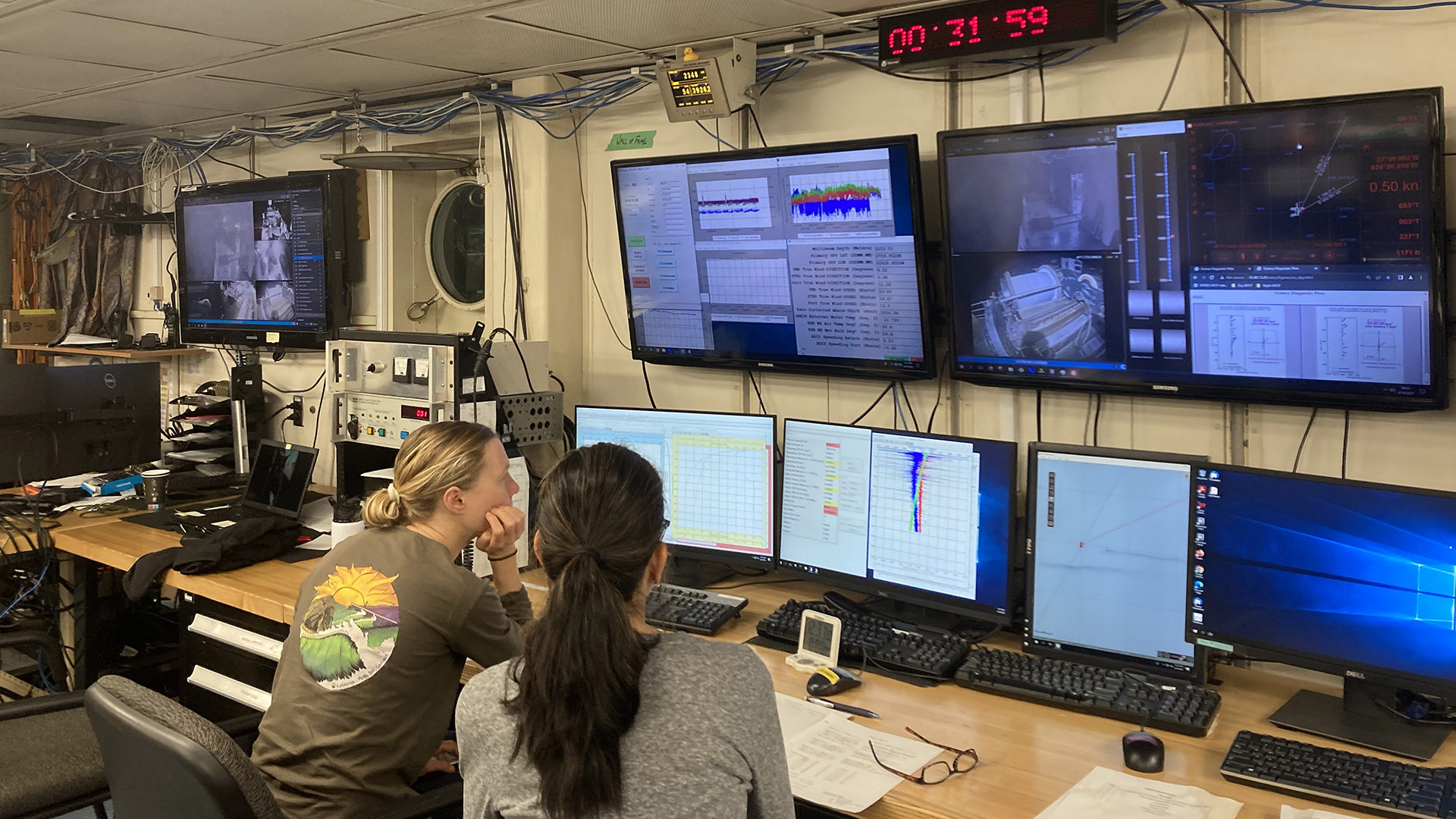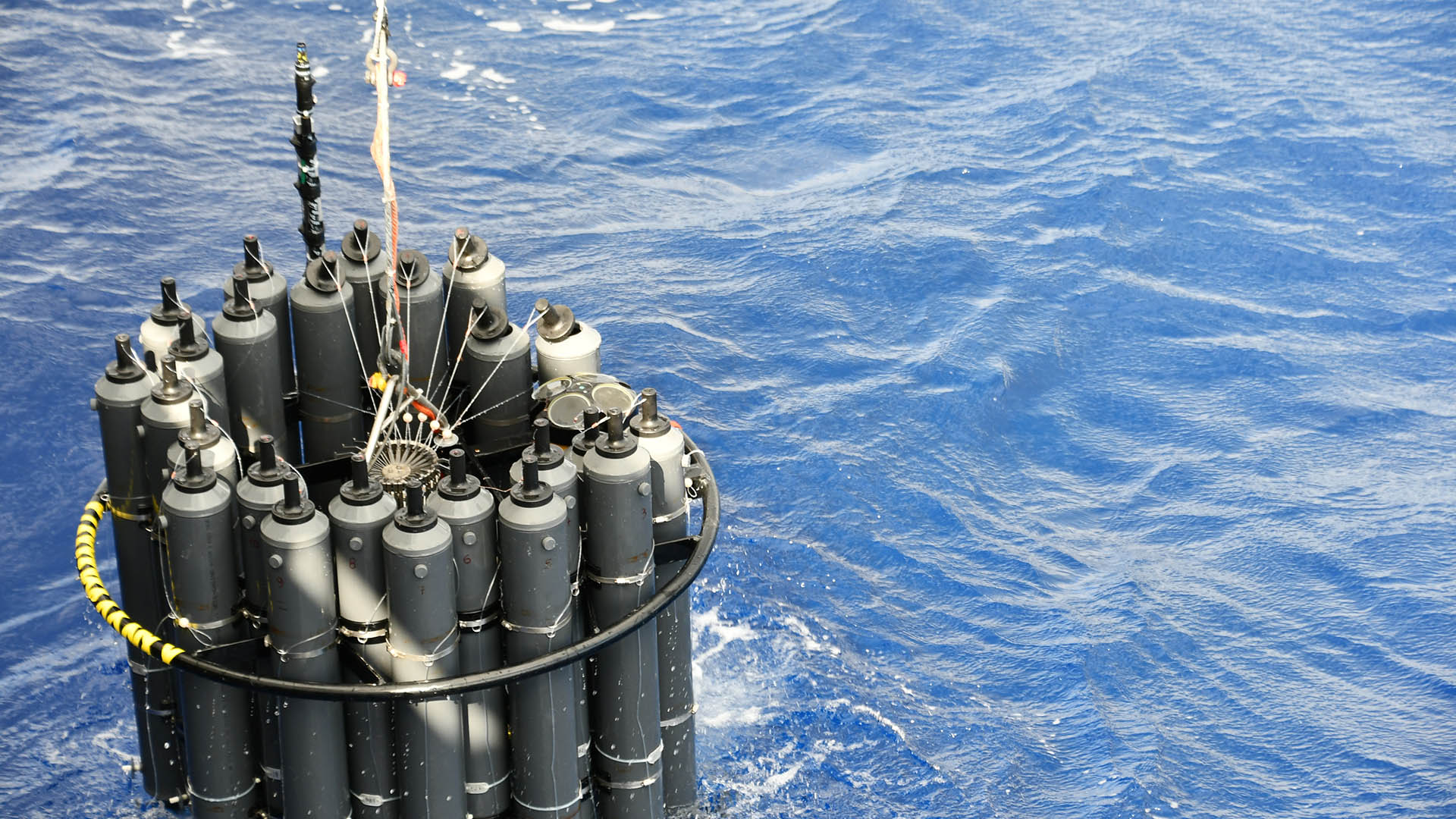It’s GO time!
April 22, 2023
Shannon McClish, CTD-watchstander
Welcome to the NOAA Ship Ronald H. Brown line A16N leg 2! We have finished a long transit from Rota, Spain and arrived at our first sampling station. We are starting at the last station occupied by the team on leg 1 to complete the full sampling line that began in the South Atlantic near Brazil and will end off the coast of Iceland. It is my first time on a research vessel at sea, and after five days I (mostly) know my way around the ship and have my sea legs. I am on the night watch, so I start working at midnight and end at noon, which took some adjusting. While it is strange to head to sleep in the middle of the day, I also get to witness some beautiful starry nights and sunrises.

My role on the ship is a CTD watchstander, which means I help guide the CTD (conductivity, temperature, depth) rosette down to the near seafloor and back up to the surface, measuring temperature, salinity, and pressure as well as collecting water samples along the way. The CTD rosette is a cylindrical metal cage surrounded by large bottles to collect water at different depths. The science team analyzes the chemical properties of the seawater, and at some stations they also filter water for organic particles, pigments produced by phytoplankton, and eDNA. It’s pretty cool to see the team at work sampling; scientists responsible for measuring each parameter encircle the rosette and rotate from one bottle to the next as in a carefully choreographed dance.

This cruise is repeating the same “line” of sampling locations from a decade prior in order to provide key insight into changing patterns in ocean biogeochemical cycling and how the ocean transports heat and freshwater. I’m excited for more busy and beautiful days at sea, and more importantly, all the fascinating science that will come from the data we collect.
